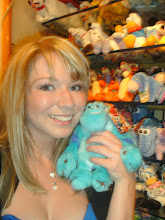After asking willing volunteers to answer my questionnaire this is the following analysis of my results. In total I asked 31 people, 14 of these were male and, 17 female.
Within the different age groups I asked 22 people aged 15-24, one person 25-34 and one person 35-44 and for 45+ I asked 7 people.
My next question was crucial to how the attitude to there responses was determining on them watching horror films or not. 24 watched them and 7 don't the reasons for not watching them were they found them traumatizing, they don't find them exciting, it will keep them up all night! Generally don't like them or would prefer to watch a different genre.
Question 4 asked what do they usually expect to see when watching a horror film this was an open question and produced qualitative data. People who didn't watch horror films popular choices were darkness, blood and generally scary things. Other answers were, ghosts, horrific images, music, suspense, trees and gore.
People who do watch horror films popular choices were: blood, things that make them jump or shocked, gore, a culprit, suspense, murders and death, the unexpected and zombies. Other answers included vampires, the scare factor, mystery, weapons, ghosts, masks, element of evil, and to do with the UN-natural.
Question 5 wanted know what element of a horror frightened you, people who didn't watch horrors answered: unnecessary jumping, true stories, seeing gory images, the unexpected, people sneaking up on others. People who did watch horrors popular answers included the unexpected, making them jump, psychological aspects, gory parts, suspense and the music. Other answers included were, vampires, silence, possession, fast pacing and true stories.
The next question asked what they like to see a popular answer from people who answered no to watching horrors said comedy/humour other answers were: people getting back together, no blood/gore, a decent plot, originality, psychological games and nothing. A popular answer from people who do watch horrors were, tension/suspense, good ending which is well explained, a good twist, along with a good storyline/plot, the unexpected and blood. Other answers included, vampires, nudity, something different, a happy ending! scenes shot in daylight, death, cliffhangers, shocking items, zombies, and the ability to empathise with the characters.
Question 7 asked what people disliked to see when watching a horror a popular answer from people who didn't watch horrors was gore other answers included unnecessary nudity, cliches, blood which was another popular answer, children and everything in general!
Answers from people who did watch horrors were: predictable this was a popular answer along with, unrealistic, gore, blood, boring plot and bad endings other answers were, stereotypes, love, not understanding the genre, sci-fi, murder, unnecessary things, too much violence, and body parts.
I wanted to find out the what characters to use so I asked the next question giving them options they are presented bellow in the pie charts:
I wanted to find out the what characters to use so I asked the next question giving them options they are presented bellow in the pie charts:
 I also gave an option for other 4 people ticked this and some commented vampire or monster.
I also gave an option for other 4 people ticked this and some commented vampire or monster. The last question asked whether they watched the same horror film again, 21 said yes and 10 said no.
After receiving all the answers to the questionnaire the results will help me when creating the film as it will let me make my film better for the different ages.






